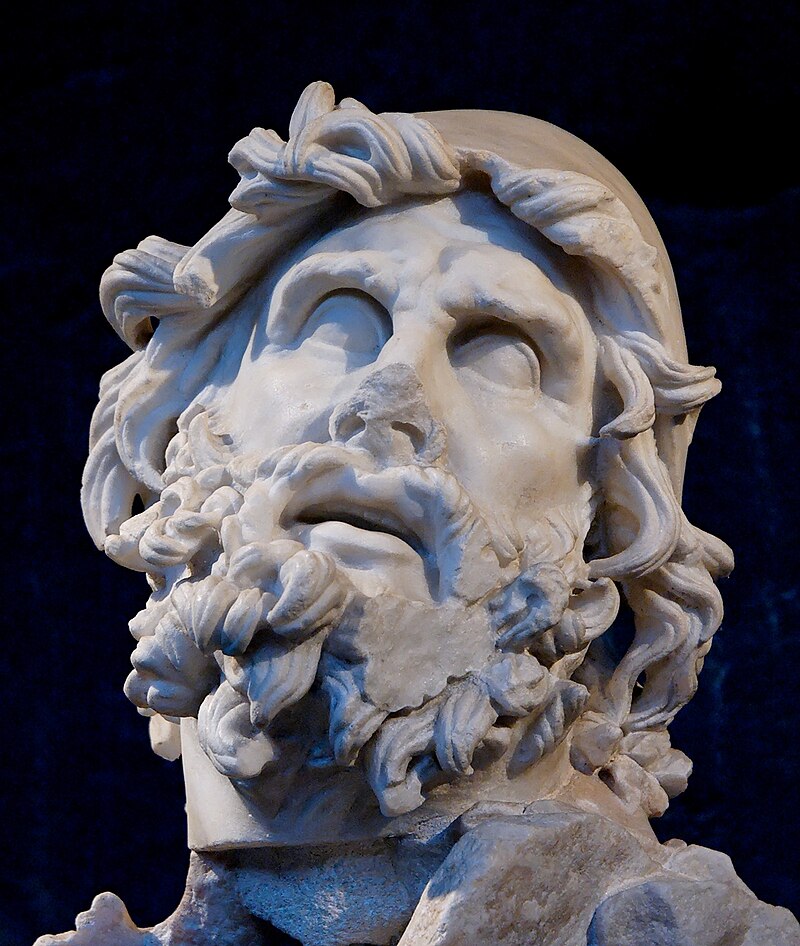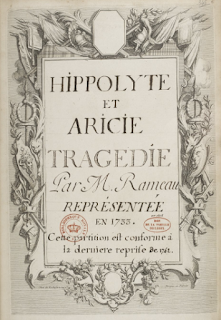Monteverdi - Il ritorno d'Ulisse in Patria
Théâtre des Champs Elysées, Paris, Monday March 6 2017
Conductor: Emmanuelle Haïm. Production: Mariame Clément. Sets and costumes: Julia Hansen. Lighting: Bernd Purkrabek. Ulisse: Rolando Villazón. Penelope: Magdalena Kožená. Giunone: Katherine Watson. Eumete: Kresimir Spicer. Amore/Minerva: Anne-Catherine Gillet. Fortuna/Melanto: Isabelle Druet. L'umana Fragilità/Pisandro: Maarten Engeltjes. Tempo/Antinoo: Callum Thorpe. Giove/ Anfinomo: Lothar Odinius. Nettuno: Jean Teitgen. Telemaco: Mathias Vidal. Eurimaco: Emiliano Gonzalez Toro. Iro: Jörg Schneider. Ericlea: Elodie. Le concert d'Astrée.
The most remarkable thing about this Ulisse was the cast – a glance at the list is telling. It’s unusual in a “HIP” performance of a work of this period not to have at least a few, if not indeed a majority of voiceless wonders who seem to have strayed out on stage from the back row of the church choir. It’s rare in opera of any kind to have a cast as consistently strong overall as this one. And no, I’m not even going to add “with one exception.”
The star of the show was, for me, Anne-Catherine Gillet. “Fabulous! Fruity voice and at home on stage,” e-mailed a friend. Quite right: her voice has filled and rounded out over the years, and as an actress she simply sparkles. She stole the show from the faultless but understandably less spectacular Magdalena Kožená. Kresimir Spicer was a very striking Eumete: a big (unexpectedly so), strong, bright voice. And I continue to be fascinated by Callum Thorpe: a true, resounding bass voice – bass, not a baritone slumming it in the nether regions - emerging from such a slight, youthful frame. The secondary roles were impeccably taken – special mention for Isabelle Druet as the perky maid Melanto.
First-night reviews were cruel about Rolando Villazón’s Ulisse: “Shipwreck,” said at least one. I suspect, having seen him in the third performance of the run, that he just had a very bad opening night, whether for health reasons or nerves or a combination of both. Certainly, you have to forget the Villazón of the past (and in this performance, bald and bearded, you don’t recognise him). This is a different voice altogether, uneven in emission, sometimes hoarse, sometimes fleshless, sometimes hollow, faltering, effortful and heavy going… but still expressive and, here, even if there’s an element in it of making a virtue of necessity, dramatically plausible. An ageing hero who’s been through the wars returns wearily home to find himself surrounded by energetic gods and healthy young suitors. The contrast works, vocally and dramatically. I was told privately that a professional critic also there last night remarked: “Villazon wasn't great but I'd rather listen to him than put up with…” I won’t say whom, but someone from the “baroque” world widely admired who might have got the part.
Le concert d'Astrée under Emmanuelle Haïm was lively but rather plain and dry and matter-of-fact, and though I imagine the wind instruments (wood and brass) were certified period organic and vegan, the resulting tuning was a little bit sour. The enormously long neck of the theorbo caused quite a stir – the old man in front of me was so intrigued he went down to the pit to ask what it was.
The production was harmless but mostly dull, and was at least encased in sets reflecting sound into the house. Once the curtain of vertical ribbons showing the Aegean was up, the palace we saw was a run-down place with drab, cream panelling, now quite grubby and neglected. The space had a framed, curtained theatre-within-the-theatre at the rear, a platform all round and flights of steps to left and right down into the central well. The production mixed registers, the serious action being interspersed with gags, and the costumes mixed periods, from ancient Greece, via Monteverdi’s time, to today – sometimes mixed up in a single character.
Up in the theatre-within-the-theatre, Olympus was a shabby old pub with a dart board where Jupiter, smoking a cigar, and Neptune, a bushy-bearded sea-dog, drank pints with Minerva in leopard-print leggings. When a dart flew out of the window, its giant twin fell to the stage: the symbolic eagle. The Phaeacians’ ship was a cardboard cut-out that slid on from left to right, with their curly-haired, bearded heads appearing through holes. When the ship abandoned them on the beach, they were left stranded with buckets, spades and inflatable rubber rings.
Penelope wore classic white. Her nurse was in full renaissance gear but her servants wore 20th-century: little black dress and white apron for for Melanto, butler stripes for her boyfriend. The nymphs were showgirls with turquoise feathers. Ulisse had a modern-looking white jumper over antique white robes but Telemaco was in jeans, trainers and a bomber jacket with a back pack. The suitors were all, of course, in natty dinner suits.
And so on… I think some people were glad that these details livened up the potentially static action. They reminded me of many Offenbach stagings over the years, including Pelly’s, but watered down – and Monteverdi’s intentions were, after all, quite different, so I wasn’t altogether sure about the added fooling around. Overall it was neither searingly tragic nor side-splittingly funny, which of course would have been odd anyway. I think Mariame Clément has done better.
The cameras were out in force last night, so this was filmed. It will be a chance for people to make their minds up for themselves about the true current capacities of Rolando Villazón, away from those cutting reviews. And if a DVD ensues, we can always listen to it without watching: a cast as strong as this is a rare treat.
Conductor: Emmanuelle Haïm. Production: Mariame Clément. Sets and costumes: Julia Hansen. Lighting: Bernd Purkrabek. Ulisse: Rolando Villazón. Penelope: Magdalena Kožená. Giunone: Katherine Watson. Eumete: Kresimir Spicer. Amore/Minerva: Anne-Catherine Gillet. Fortuna/Melanto: Isabelle Druet. L'umana Fragilità/Pisandro: Maarten Engeltjes. Tempo/Antinoo: Callum Thorpe. Giove/ Anfinomo: Lothar Odinius. Nettuno: Jean Teitgen. Telemaco: Mathias Vidal. Eurimaco: Emiliano Gonzalez Toro. Iro: Jörg Schneider. Ericlea: Elodie. Le concert d'Astrée.
The most remarkable thing about this Ulisse was the cast – a glance at the list is telling. It’s unusual in a “HIP” performance of a work of this period not to have at least a few, if not indeed a majority of voiceless wonders who seem to have strayed out on stage from the back row of the church choir. It’s rare in opera of any kind to have a cast as consistently strong overall as this one. And no, I’m not even going to add “with one exception.”
The star of the show was, for me, Anne-Catherine Gillet. “Fabulous! Fruity voice and at home on stage,” e-mailed a friend. Quite right: her voice has filled and rounded out over the years, and as an actress she simply sparkles. She stole the show from the faultless but understandably less spectacular Magdalena Kožená. Kresimir Spicer was a very striking Eumete: a big (unexpectedly so), strong, bright voice. And I continue to be fascinated by Callum Thorpe: a true, resounding bass voice – bass, not a baritone slumming it in the nether regions - emerging from such a slight, youthful frame. The secondary roles were impeccably taken – special mention for Isabelle Druet as the perky maid Melanto.
First-night reviews were cruel about Rolando Villazón’s Ulisse: “Shipwreck,” said at least one. I suspect, having seen him in the third performance of the run, that he just had a very bad opening night, whether for health reasons or nerves or a combination of both. Certainly, you have to forget the Villazón of the past (and in this performance, bald and bearded, you don’t recognise him). This is a different voice altogether, uneven in emission, sometimes hoarse, sometimes fleshless, sometimes hollow, faltering, effortful and heavy going… but still expressive and, here, even if there’s an element in it of making a virtue of necessity, dramatically plausible. An ageing hero who’s been through the wars returns wearily home to find himself surrounded by energetic gods and healthy young suitors. The contrast works, vocally and dramatically. I was told privately that a professional critic also there last night remarked: “Villazon wasn't great but I'd rather listen to him than put up with…” I won’t say whom, but someone from the “baroque” world widely admired who might have got the part.
Le concert d'Astrée under Emmanuelle Haïm was lively but rather plain and dry and matter-of-fact, and though I imagine the wind instruments (wood and brass) were certified period organic and vegan, the resulting tuning was a little bit sour. The enormously long neck of the theorbo caused quite a stir – the old man in front of me was so intrigued he went down to the pit to ask what it was.
The production was harmless but mostly dull, and was at least encased in sets reflecting sound into the house. Once the curtain of vertical ribbons showing the Aegean was up, the palace we saw was a run-down place with drab, cream panelling, now quite grubby and neglected. The space had a framed, curtained theatre-within-the-theatre at the rear, a platform all round and flights of steps to left and right down into the central well. The production mixed registers, the serious action being interspersed with gags, and the costumes mixed periods, from ancient Greece, via Monteverdi’s time, to today – sometimes mixed up in a single character.
Up in the theatre-within-the-theatre, Olympus was a shabby old pub with a dart board where Jupiter, smoking a cigar, and Neptune, a bushy-bearded sea-dog, drank pints with Minerva in leopard-print leggings. When a dart flew out of the window, its giant twin fell to the stage: the symbolic eagle. The Phaeacians’ ship was a cardboard cut-out that slid on from left to right, with their curly-haired, bearded heads appearing through holes. When the ship abandoned them on the beach, they were left stranded with buckets, spades and inflatable rubber rings.
Penelope wore classic white. Her nurse was in full renaissance gear but her servants wore 20th-century: little black dress and white apron for for Melanto, butler stripes for her boyfriend. The nymphs were showgirls with turquoise feathers. Ulisse had a modern-looking white jumper over antique white robes but Telemaco was in jeans, trainers and a bomber jacket with a back pack. The suitors were all, of course, in natty dinner suits.
And so on… I think some people were glad that these details livened up the potentially static action. They reminded me of many Offenbach stagings over the years, including Pelly’s, but watered down – and Monteverdi’s intentions were, after all, quite different, so I wasn’t altogether sure about the added fooling around. Overall it was neither searingly tragic nor side-splittingly funny, which of course would have been odd anyway. I think Mariame Clément has done better.
The cameras were out in force last night, so this was filmed. It will be a chance for people to make their minds up for themselves about the true current capacities of Rolando Villazón, away from those cutting reviews. And if a DVD ensues, we can always listen to it without watching: a cast as strong as this is a rare treat.
.jpg)




Comments
Post a Comment